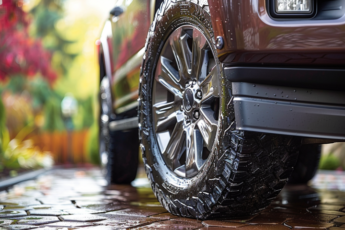Last Updated on 4 weeks
Exploring the World of Used Tires
Navigating the cost of vehicle upkeep can be a savvy affair, particularly for those cruising in a pre-loved ride around Winnipeg. When the time comes for tire replacement, the option of used tires emerges as a wallet-friendly alternative, capable of delivering substantial savings without skimping on quality.
Consider this: A brand-new, all-season tire can cost anywhere from $100 to $350, depending on the tire’s dimensions, the vehicle it’s intended for, and the brand you prefer. That’s a significant investment for a complete set!
Let’s move on to the subject of used tires. Priced between $25 and $100, they provide a cost-effective option that does not compromise on meeting your vehicle’s needs, whether performance tires designed for summer heat or winter tires designed for icy roads. The selection is extensive, with all-terrain vehicles ready to tackle a variety of driving surfaces.
But the benefits extend beyond your finances. Opting for used tires is a green flag for the environment. It’s an act of recycling that lessens the rubber’s burden on our planet, curbing the toxic trend of tire waste and relieving our overflowing landfills.
As you cruise through the options, you might pause at a crossroads, pondering the safety of used tires. Let’s roll into that conversation and unpack the facts.
Are Used Tires Safe?
Regarding the safety of used tires, it’s not a one-size-fits-all answer. Like any road trip, the condition of your tires can lead to very different journeys. Some tires might show a patchwork of repairs yet still offer a safe and smooth ride. The key checkpoints are simple: assess the tread depth and watch for any damage.
Let’s talk specifics. You would want to avoid hooking a ride with tires that have a tread depth flirting with the bare minimum of 3/32 inches. Getting wary at 4/32 inches is wise. Why’s that? AAA’s research shows that worn tires can add 90 feet to your stopping distance at highway speeds on a rainy day.
That’s about as long as an eighteen-wheeler truck! So, when you’re in the market for used tires, prioritize a healthy tread depth and give a hard pass to any tires that show visible damage, like severe cuts, uneven wear patterns, or any unusual bulges or distortions.
Need a tread depth tool?
No worries! There’s a nifty trick with a quarter. Just flip it upside down and slot it into the tire’s groove. If George Washington’s head is pronounced, it’s time to start tire shopping.
And if your wallet’s feeling a bit light, considering a set of gently used tires could be the move. Just ensure you’re looking in the right places – reputable sellers who value safety as much as you do.
If you’re searching for quality second-hand tires, check out BestUsedTires.com. They boast an impressive range of trusted brands like Firestone, Goodyear, Bridgestone, and more.
The site stands out with its commitment to customer satisfaction, offering perks like a 90-day money-back guarantee, complimentary shipping, and many glowing customer reviews.
The suitability of a used tire hinges on the specific tire in question. Generally, a tire with excessive patching or visible damage may not be the best for longevity and reliability.
Tires are as unique as the vehicles they carry. While some may show signs of previous repairs, it doesn’t automatically discount them from use. However, monitoring the tread depth and looking for wear and tear is essential.
Tread depths nearing 3/32 inches should raise a red flag. Steer clear of tires with questionable wear or any that could put you at risk of a puncture. Safe travels begin with safe tires, so always choose those that promise a secure journey.
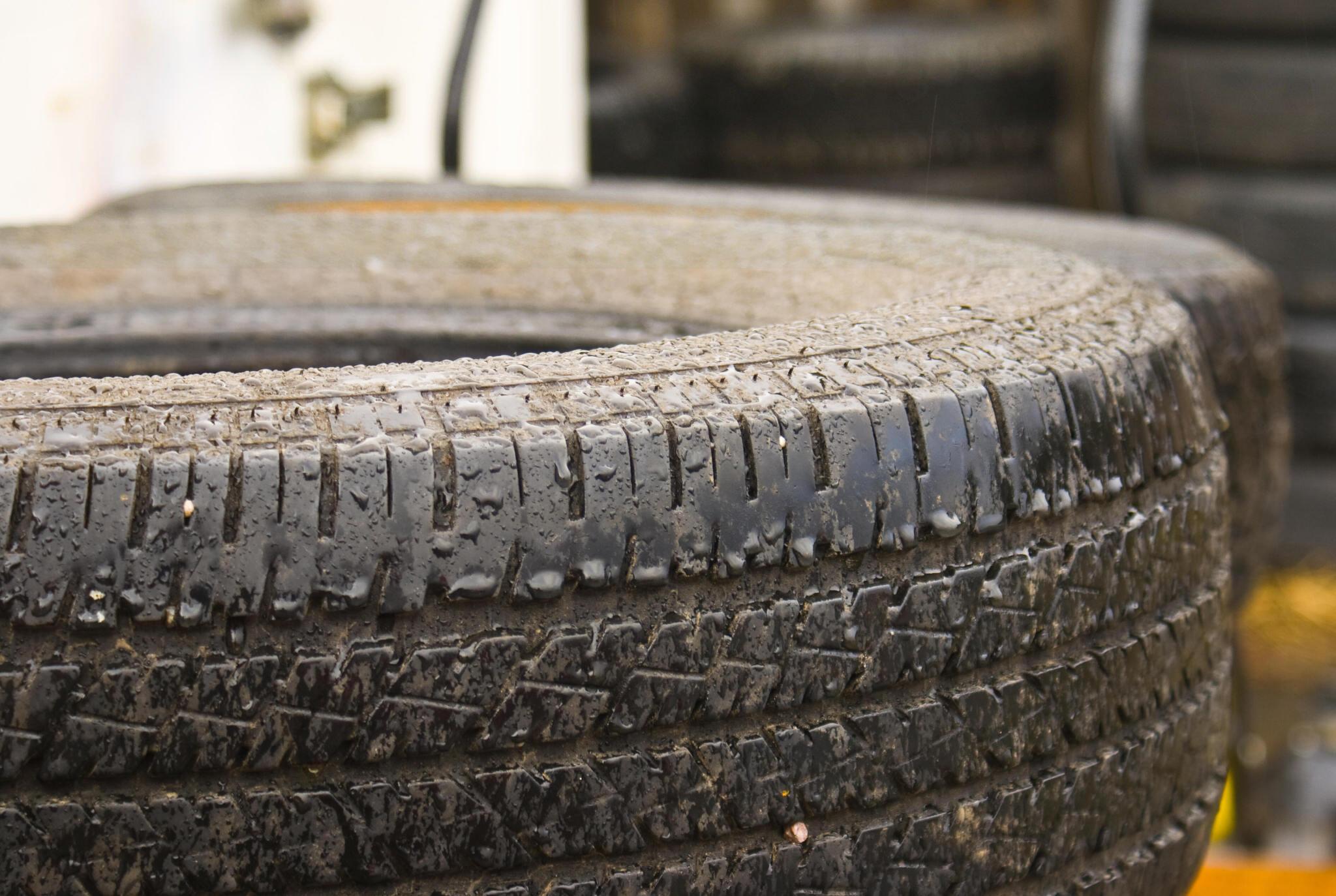
What to Look for When Buying Used Tires
Diving into the market for used tires requires a blend of vigilance and knowledge. Start thoroughly checking the tire’s tread depth, ensuring it’s above the bare minimum.
A detailed look at the sidewalls for any damage can reveal much about the tire’s past and potential future issues. It’s equally essential to confirm the tire’s age and to ensure it adheres to your vehicle manufacturer’s specifications. Don’t hesitate to discuss the tire’s backstory with the seller, touching upon any repairs or mishaps it may have experienced.
Tread Depth Exploration
Arm yourself with a penny on your quest for used tires, as this coin can be a handy gauge for tread depth. Insert head-down into the tire’s grooves; an evident Lincoln’s head indicates that the tire’s tread is too worn for safe driving.
Identifying Exposed Cords
An all-around tread inspection can uncover any exposed steel cords—a red flag signaling that the tire could be compromised. These cords should remain unseen; if not, it’s best to continue your search elsewhere.
Detecting Belt Separation
Investigate the sidewall and the surface of the tread for any abnormalities like bumps or waves that might suggest past impacts or delamination issues. Sometimes, these flaws are more tactile than visual, so feel free to get hands-on to feel for inconsistencies.
Assessing Bead Integrity
Pay close attention to the tire’s bead area—the vital zone where the tire hugs the wheel. Look for “bead chunking” or any damage hindering a proper and secure seal.
By approaching the purchase of used tires with an informed and attentive strategy, you can secure a set that provides both safety and value, ensuring your vehicle is equipped for the journey ahead without breaking the bank.
Scanning for Liner Damage
Peering into the tire’s inner liner is critical for quality used tires. Air loss can cause sidewalls to fold and rub against each other, stripping away the liner. Watch for a distinctive wear “stripe” or any “rubber dust” inside the tire. Visible inner cords or significant sidewall wear are signs that the tire’s safety has been compromised.
Evaluating Repair Work
As you assess a used tire, watch for any puncture repairs. A tire with a fully patched interior is generally acceptable, while a simple plug repair can cause concern. Steer clear of tires with repairs near the sidewalls—they’re the most vulnerable and crucial to tire integrity.
Assessing Aging Factors
Tires age from the inside out. Begin with verifying the Tire Identification Number (TIN)—missing this could indicate questionable practices. Any tire over six years old warrants extra scrutiny; look for tell-tale cracks that suggest the onset of dry rot. And be wary of tires that seem freshly painted—it could be an attempt to disguise aging.
Checking for Recalls
Utilize the TIN to investigate if the tire has been subject to any recalls. This step is essential for ensuring you’re not investing in a tire with known safety issues.
Remember, while safety regulations must be enforced, vigilance is your best defense in purchasing safe, used tires. Don’t rely solely on the law—take charge of your safety. If in doubt, consult a comprehensive tire buying guide to make an educated decision for your vehicle.
Navigating the Lifespan of Pre-Owned Tires
The journey of a used tire can stretch from a couple of years up to an entire five-year trek, heavily influenced by the tire’s original quality and condition.
Tires stand as the unsung heroes of your vehicle’s reliability, and while they don’t demand frequent replacement, their role is pivotal in your car’s performance. The cost of these circular companions can indeed be steep, but there’s a silver lining for budget-conscious drivers. The world of used tires offers a wallet-friendly alternative.
Shopping for tires raises a fundamental question: Can used tires be both a bargain and safe?
Safety is a non-negotiable priority, and this guide is here to steer you through the maze of choices. We’ll delve into the ins and outs of new versus used tires, highlighting how a set of gently worn tires can be a smart pick for those mindful of their budget. Plus, we’ll roll out some price comparisons to give you a clear picture of the potential savings.
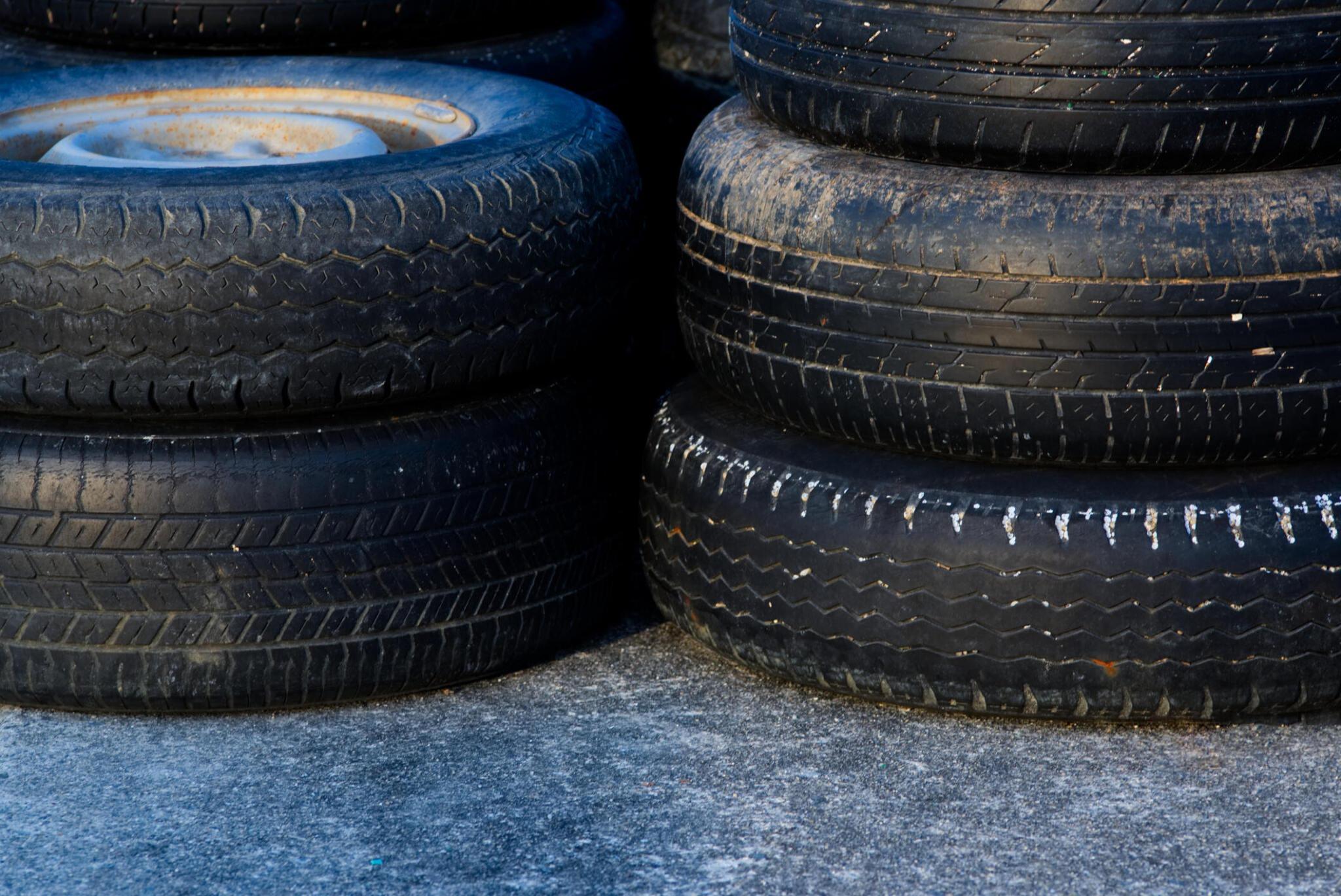
Are Used Tires As Safe As New Tires?
Safety can still be on the table when purchasing used tires if you follow some vital technical guidelines and maintain a friendly approach to the selection process. Here’s a breakdown of what you should keep in mind:
- Tread Depth Analysis: The depth of tread on a tire plays a pivotal role in ensuring optimal road grip, particularly in challenging conditions like wet or slippery surfaces. Be aware that used tires may exhibit reduced tread depth due to wear and tear, potentially increasing the risk of hydroplaning and compromising handling. Prioritize checking the remaining tread depth on used tires, ensuring they meet the legal minimum requirements in your locality.
- Aging and Rubber Deterioration: Tires, regardless of their usage, can degrade over time due to natural aging processes. Rubber, the tire’s core material, can experience dry rot and a gradual loss of structural integrity as it ages. It’s advisable to inspect the manufacturing date, typically found on the sidewall, and refrain from purchasing ancient tires, even if their tread depth appears sufficient.
- Scrutinize Tire Integrity: Conduct a thorough examination of used tires, paying close attention to any signs of damage such as cuts, punctures, bulges, or sidewall issues. These structural concerns can significantly compromise tire safety, warranting immediate attention or avoidance.
- Historical Maintenance Records: Inquire about the maintenance history of the used tires you’re considering. Proper maintenance, including routine rotations, correct inflation, and wheel balancing, can improve tire longevity and safety. Tires with a well-documented maintenance history are likelier to be in good condition.
- Consider Usage Patterns: Investigate the past usage patterns of the tires to gain insights into their overall condition. Tires used for high-performance driving, off-roading, or towing heavy loads may have experienced more wear and tear than those used for daily commuting.
- Emphasize Brand and Quality: Don’t underestimate the significance of tire brand and quality. Reputable manufacturers often produce high-quality tires known for their durability and enhanced safety features. Prioritize these options when selecting used tires.
- Cost-Benefit Analysis: While contemplating the purchase of used tires, weighing the cost savings against potential safety risks is essential. In certain situations, investing in new tires may prove more cost-effective in the long run, offering peace of mind with full tread depth, warranties, and a well-documented history.
Used tires can be safe if they meet specific criteria and are inspected thoroughly before acquisition. Assess their condition, age, and usage history diligently to ensure they align with your vehicle and driving requirements.
Nevertheless, for those who prioritize safety above all else, new tires often offer the assurance of optimal performance with the added benefits of warranty coverage and a transparent history.
Decoding the Value of Pre-Owned Tires
Everybody loves snagging a bargain, but not at the expense of safety. Investing in new tires is a wise choice for staying secure on the streets. After all, they are your vehicle’s sole point of contact with the pavement, and having top-notch, trustworthy tires is non-negotiable for road safety.
The realm of used tires is a Wild West. Without firm legal standards to govern their sale, the quality and safety of these tires can vary enormously—even from the same seller. While there are sellers who rigorously vet their tires to ensure they’re roadworthy, others might not be as ethical, sometimes offering tires that could put your journey at risk.
If considering the used tire route, carefully check the remaining tread depth. Brand-new tires come with a tread depth of about 10/32″ or 11/32.” However, once they wear down to 2/32,” they’re not just hazardous—they’re illegal in states with strict safety standards like Virginia. It’s all about the mileage you’ll get for your money, so weigh the wear against the cost before you make the call.
Inspection Process & Quality Check
While the hunt for new tires can lead you down many paths, the compelling price match promise and diverse selection at Giga Tires simplify the journey. Before you set off to secure your next set of wheels, conversing with your provider is wise, ensuring the tires you’re eyeing are up to snuff.
Giga Tires takes the road to safety seriously, carefully inspecting each tire before adding it to its list. Upon arrival, each tire is greeted with an essential pressure test to validate its integrity. When it comes to previous wear and repairs, they stick to the Rubber Manufacturers Association’s playbook, which contains the details below:
- A puncture shouldn’t be more comprehensive than a small pebble, precisely 6mm.
- Repairs should be confined to the tire’s tread territory.
- A proper mend fuses a stem with a patch for a robust fix.
- Steer clear of tires that have seen over a decade of seasons, waving goodbye to anything predating 2008.
If a tire fails any of these checkpoints, it’s promptly shown the exit. What about that “tread section”? It’s their way of saying that sidewall compromises are a no-go zone. Sidewall damage spells out a tire’s retirement since it’s integral to its foundational strength and the smoothness of your drive. Trustworthy tire techs will advise against repairing sidewall damage and recommend a new tire.
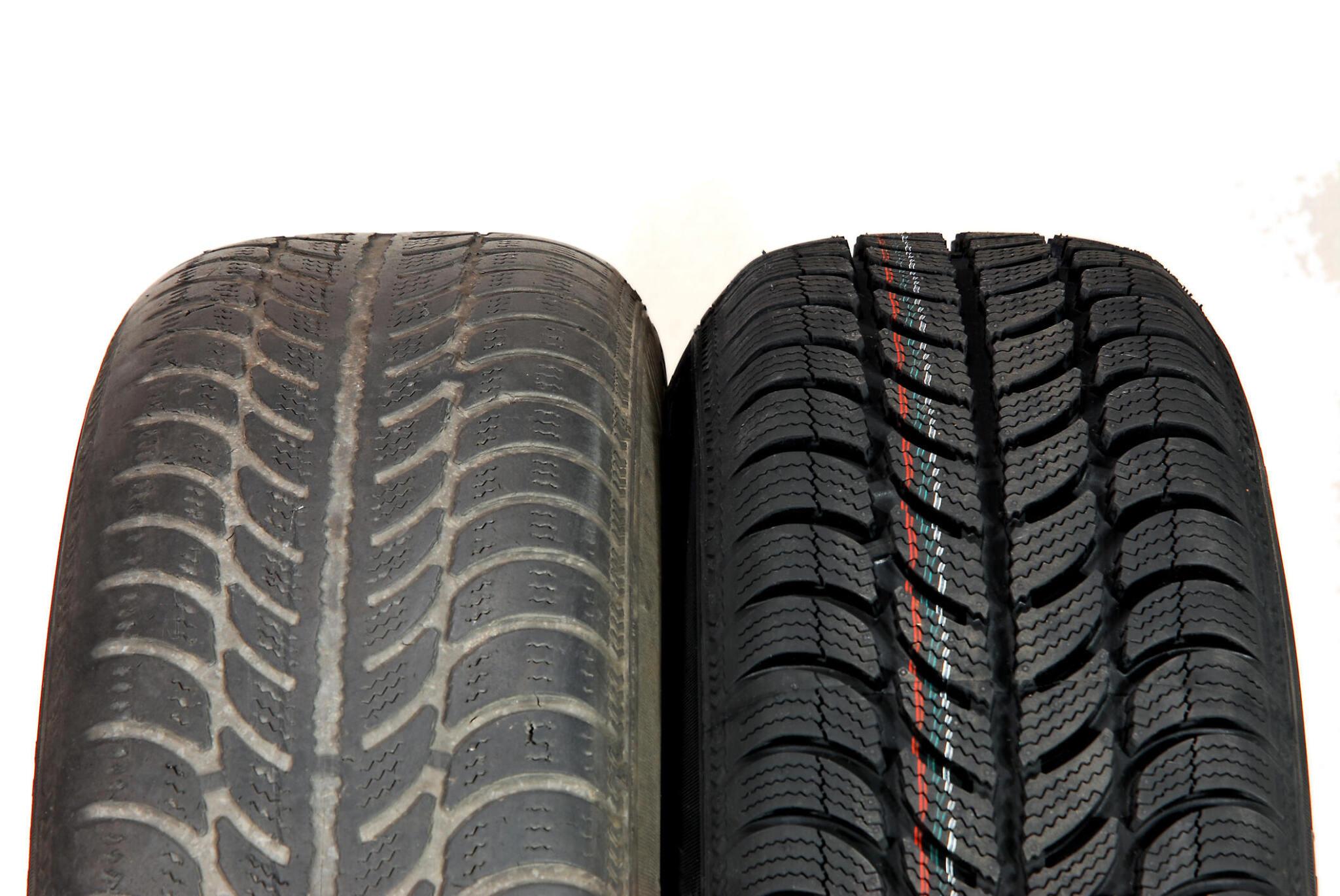
Used Tires vs. New
Embarking on a journey with new tires offers peace of mind through different warranties that safeguard everything from tread life to overall craftsmanship. The undeniable truth about spanking new tires is their premium price tag, which escalates even further for those sporting larger 19-inch or 20-inch wheels. If your vehicle craves the prowess of high-performance or ultra-high-performance (UHP) tires, invest more in these specialized wheels.
Here’s where the gently used tires roll into the picture as a wallet-friendly alternative. While they may not boast the same warranties as their untouched counterparts, the savings are substantial. This allows vehicle owners to free up funds for other vehicle essentials like repairs or maintenance services, including balancing or alignment.
Buying used tires can be especially wise when you’re nearing the end of a vehicle lease. If your odometer is getting dangerously close to its limit, swapping in a set of quality used tires can help you avoid the extra fees that are frequently imposed for wear and tear. When the lease term is up, a quick switch to the original set ensures you return your ride in tip-top, lease-compliant condition.
This approach isn’t just about avoiding extra costs and wise resource management. By choosing used tires, you’re not only saving money, but you are also contributing to a more sustainable consumption cycle. It’s a move that says you care about your vehicle’s health and the environment’s well-being.
Buying or remanufacturing a set of tires is a personal choice influenced by budget constraints and performance preferences. What matters most is ensuring that safety remains the non-negotiable constant in your tire tale. With the proper research and a trustworthy source, used tires can help you drive safely and efficiently, making them a viable contender in the tire terrain.
How Long Do Used Tires Last? |
|
| Brand and Type Variability | – Different brands and types of tires have varying lifespans.
-Touring tires tend to outwear performance or summer variants. – Touring tires are designed for longevity. |
| H/T vs. A/T Longevity | – Highway-terrain (H/T) tires for pickups and SUVs last longer than all-terrain (A/T) tires built for diverse environments. |
| Factors Influencing Tread Life | – The condition of your vehicle affects tire wear.
– Gentle driving can extend tire life, while aggressive driving can shorten it. – Higher mileage leads to faster tire wear. – Road and weather conditions can accelerate tire wear. – Responsible driving can help maximize the lifespan of used tires. |
Understanding the Ins and Outs of Used Tires
A used tire refers to a tire already used on the road. It may have come from a vehicle traded in, salvaged, or otherwise taken out of service.
When you’re in the market for tires, balancing the cost with the remaining tread life is critical. Examining the tire’s tread closely and considering any warranties offered is essential. The tire’s treadwear grade can be a revealing indicator to guide your choice in the following ways:
- Variability in Quality: The spectrum of quality among used tires is broad. You might find one with a mere 20,000 kilometers of experience, or you could encounter a tire with 100,000 kilometers under its belt. Sometimes, the tire’s history might need to be clarified.
- Longevity Potential: Despite their history, many used tires still have a generous amount of life left, often ranging from 80,000 to 200,000 kilometers if they’re free from damage. This makes them an attractive option for those looking to save money.
- Where to Find Them: They’re commonly available at local repair shops, service stations, and specialized tire retailers, offering various options for cost-conscious consumers.
Decoding the Diversity in Used Tires
The common misconception is that all used tires are made from the same material. There’s a distinct difference between used tires and those that are remanufactured.
The term “used tires” typically refers to those either repaired after damage or salvaged from vehicles that are no longer used. The condition of these tires can vary significantly, influenced by their past life, how much tread they’ve got left, and who made them. Inspecting the remaining tread depth to gauge the tire’s wear and potential lifespan is always intelligent.
Remanufactured tires, on the other hand, undergo a rejuvenation process. This isn’t a primary repair job; it’s more like giving the tire a second life. These tires are inspected, buffed, and given a new sidewall and tread through bead-to-bead remolding, all while the core components remain intact.
New Life for Old Tires
On the outside, remanufactured tires are virtually indistinguishable from new ones, maintaining the original internal structure. For those hesitant about standard used tires, remanufactured options can be a more reassuring choice, still at a price point that’s easier on the wallet than brand-new tires.
Choosing What’s Right for You
When considering a set of used tires, reflect on your driving needs and circumstances. Whether you’re leaning towards summer, winter, or all-terrain varieties, remember to discuss proper mounting, balancing, and the possibility of a test drive.
Maintenance is Key
No matter which route you take, upholding regular vehicle maintenance is necessary. Have a professional assess the tread depth, and don’t skip routine services like tire rotation and oil changes. Pack a spare tire to safeguard against an unexpected flat when you hit the road.
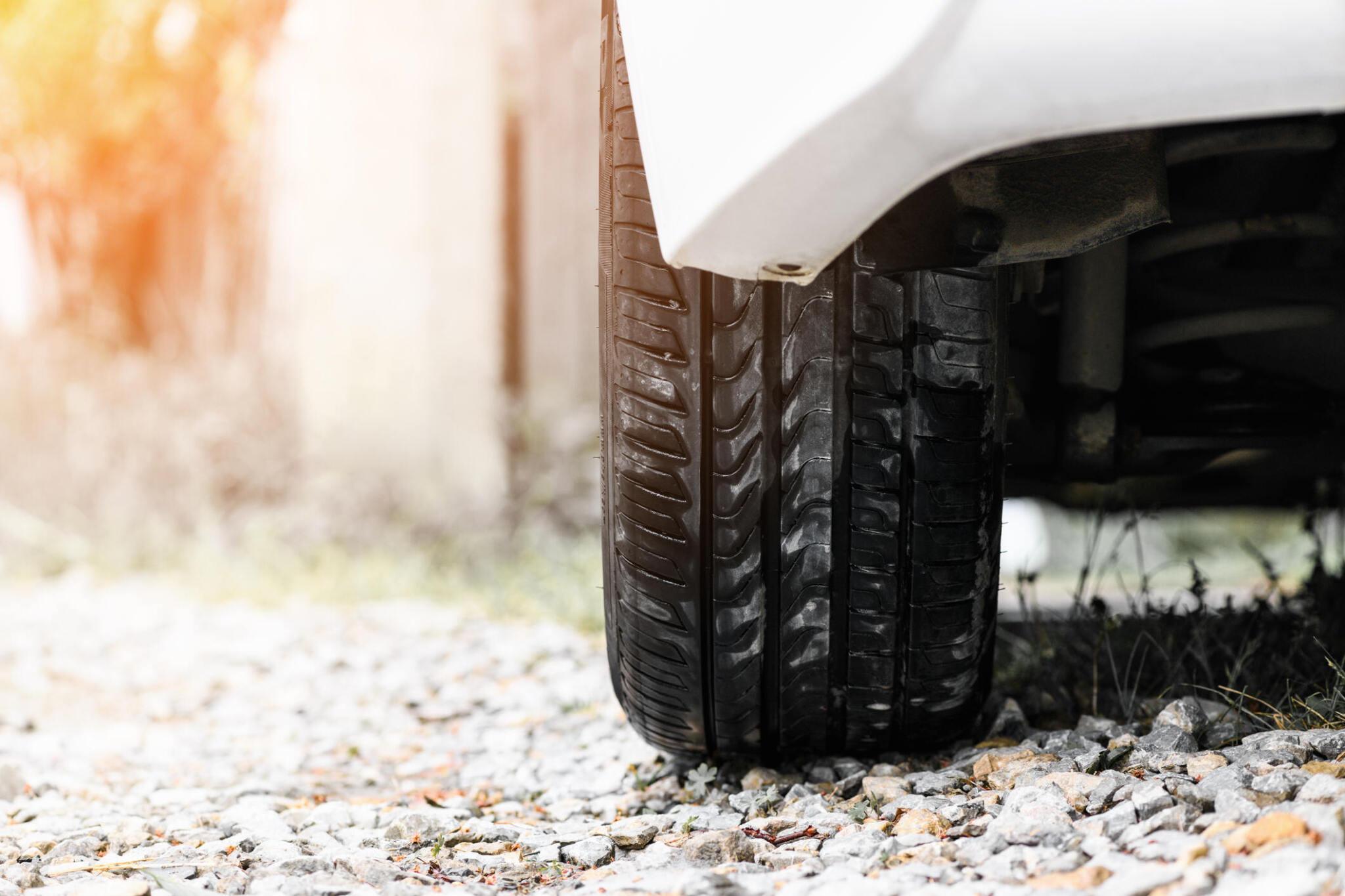
Understanding the Risks of Used Tires
Opting for pre-owned tires is a savvy way to save, but it’s like rolling the dice regarding your safety. The life story of used tires is often a mystery. They could have been:
- Subjected to heavy loads beyond their capacity.
- Incorrectly inflated, either too low or too high.
- Pushed to their limits with high-speed journeys.
- Compromised by punctures.
- Weathered by extreme climate conditions.
- Jolted by unforgiving curbs and relentless potholes.
- Hastily and improperly patched up.
- Even part of a manufacturer’s recall.
At first glance, signs of a risky tire buy might be evident — look out for cracks, raised areas, worn rubber, visible inner cords, damage around the bead, foreign objects, or a worrying lack of tread.
However, some secrets of a tire’s past are buried deeper, out of sight. Internal injuries caused by impacts or poor inflation practices are not visible during a routine inspection.
Don’t be swayed by a tire that seems barely used. Rubber ages and degrades like an old elastic band that snaps under tension. That’s why we suggest saying goodbye to tires over six years old, regardless of how unworn they appear.
If you are about the age of a tire, check the DOT code on its sidewall. This four-digit number is a timestamp from its manufacturing days — the first pair of digits stands for the production week, and the last duo indicates the year.
For instance, “DOT 3216” translates to the 32nd week 2016. Keep this in mind, and you’ll steer clear of tires that are too old for the road, no matter how good they look on the surface.
Degradation of Tires
Tire wear and its complications often come without warning, potentially leading to a tire’s abrupt failure on the road. A used tire’s true history is only sometimes apparent at first oxidation.
Naturally, due to exposure to oxygen in the air, this process gradually degrades the rubber’s molecular bonds. Such decay starts from within and remains hidden until the tire is mounted and in motion.
Adding to the buyer’s dilemma, some less reputable sellers of used tires might coat older tires with a fresh layer of black paint, giving the illusion of minimal wear and a misleading sense of newness. It’s a deceptive practice that masks the tire’s actual condition and age, which buyers must know to make informed decisions.
Navigating Quality Assurance for Tires
Buying a new tire gives you peace of mind because it has been subjected to stringent quality checks from the factory to your vehicle. However, the narrative shifts when it comes to pre-owned tires.
These tires may have received different meticulous care and could have been subject to poor servicing. The environment where they’ve been kept can also play a pivotal role; many find their interim homes in salvage yards or amidst the clutter of scrap heaps, places not known for preserving tire integrity.
This lack of regulated storage and sporadic safety assessments means that used tires often fail to meet the rigorous standards set out by federal guidelines. This is a notable deviation from the safety protocols recommended by the Rubber Manufacturers Association (RMA) for tire servicing and replacement.
Therefore, opting for used tires places one in a gray zone, balancing cost-effectiveness and adherence to recognized safety practices.
The Disadvantages of Used Tires
Delve into the often-overlooked disadvantages of using tires, highlighting the potential safety risks and performance issues with pre-owned tire choices.
| Disadvantages of Used Tires | Explanation | Recommendations |
| Potential for Unsafe Blowouts | Used tires may have hidden damage that can lead to blowouts, posing serious safety risks. | Opt for new tires with a clear history and integrity. |
| Unknown History | The past usage and maintenance of used tires often need to be clarified, making their reliability questionable. | Seek tires with verifiable background and tread life. |
| Lack of Professional Installation | Certified technicians might not install used tires, increasing the risk of improper fitting. | Have new tires installed by factory-certified professionals. |
| Irregular Inspection | Pre-owned tires may not undergo regular or thorough inspections and may be missing critical wear or damage. | Ensure regular checks by experienced technicians. |
| Compromised Quality | The quality and performance of used tires vary widely and don’t come with the assurance new tires do. | Purchase from reputable dealerships for quality assurance. |
| Safety Protocol Deviation | Used tires might not align with RMA safety practices, leading to potential compliance issues. | Follow RMA guidelines for tire safety and maintenance. |
Discovering the Ideal Place to Purchase Top-Quality Tires
In your quest for the perfect new tires, we’ve done a bit of legwork and are excited to share that Giga Tires stands out as a stellar option. They’re not just offering a generous money-back guarantee, but they also boast glowing customer feedback, complimentary shipping, and an approachable customer service team ready to assist.
For those who fancy a more personal touch and the chance to support local businesses, a quick search for “https://www.giga-tires.com/” will guide you to your neighborhood shops that pride themselves in selling and servicing high-quality tires. Whether clicking or stepping in, rest assured your tire needs are covered.
FAQs
Are Used Tires a Good Idea?
Buying used tires can be a good idea, depending on the situation. Venturing into used tires reveals a bustling market, with about 30 million traded yearly in the U.S. alone—making up a tenth of the nation’s tire market. For many, the allure of used tires is their low cost, especially when only one tire needs to be replaced. The catch is that these tires do not meet uniform legal standards. The level of care and scrutiny they receive varies significantly from seller to seller—some are meticulous with safety checks, while others may not be as thorough.
Is it better to buy used or new tires?
While your bank account might appreciate the lower upfront cost of used tires, scrutinizing their condition is necessary. New tires often offer the assurance of safety and a more extended service life. If saving money is a priority, used tires may be viable; however, be prepared to vet them thoroughly.
How much are used tires?
Affordability is one of the main attractions of used tires, but the price tag is closely tied to their condition. It’s a bit like tire matchmaking—you’ll want to find a set in great shape for the right price.
Where do Used Tires Come From?
The origins of used tires are as varied as the tires themselves. A trustworthy dealer might source them from vehicles written off due to accidents or disasters—where the tires survived unscathed. However, less reputable sources might gather tires from less savory places, even going as far as erasing the tire’s history in the DOT code.
What would make a used tire dangerous?
The gamble with used tires is the unknown. You could unwittingly drive away on worn, damaged, or even recalled tires without a thorough inspection. The lack of regulatory oversight for used tire sales adds an element of risk to your purchase.
What should you look for when buying a used tire?
Not all used tires spell trouble. If you’re well-versed in tire assessment, they can offer significant savings. Yet, the downside of a poor-quality used tire is a shorter lifespan and the potential for accidents. As you explore your options, remember the stakes and take the time to make an informed decision.
How Do I Choose a Good Set of Used Tires?
To choose a good set of used tires, steer clear of anything with less than 7 to 9/32″ tread depth—and aim even higher for more robust truck or SUV tires. A shallow tread spells trouble down the road.
When browsing listings, take the displayed tread depths as a starting point but verify with the actual tire photos provided. Watch out for signs of uneven wear and proceed with caution—if something seems wrong, it’s wise to continue your search.







